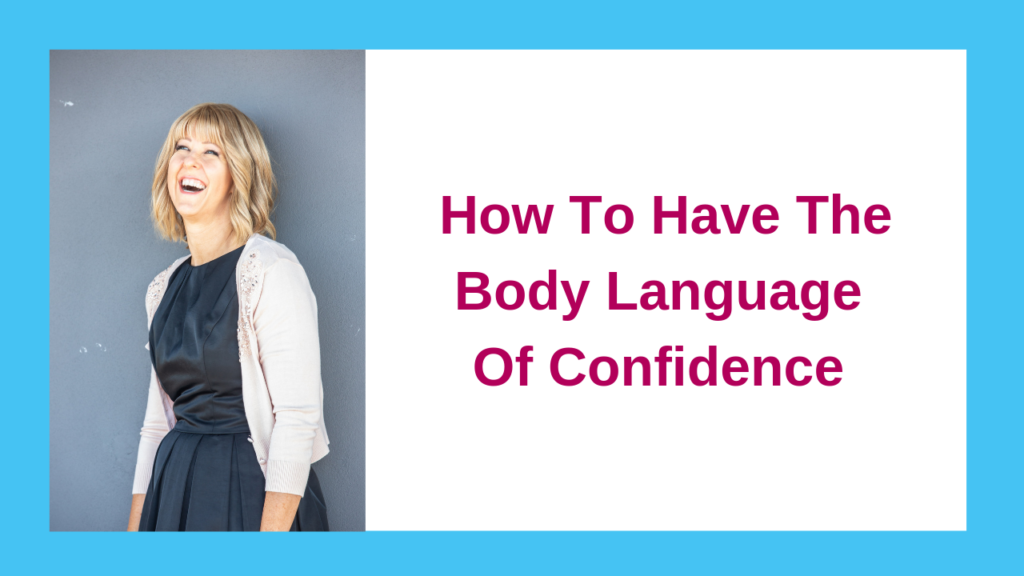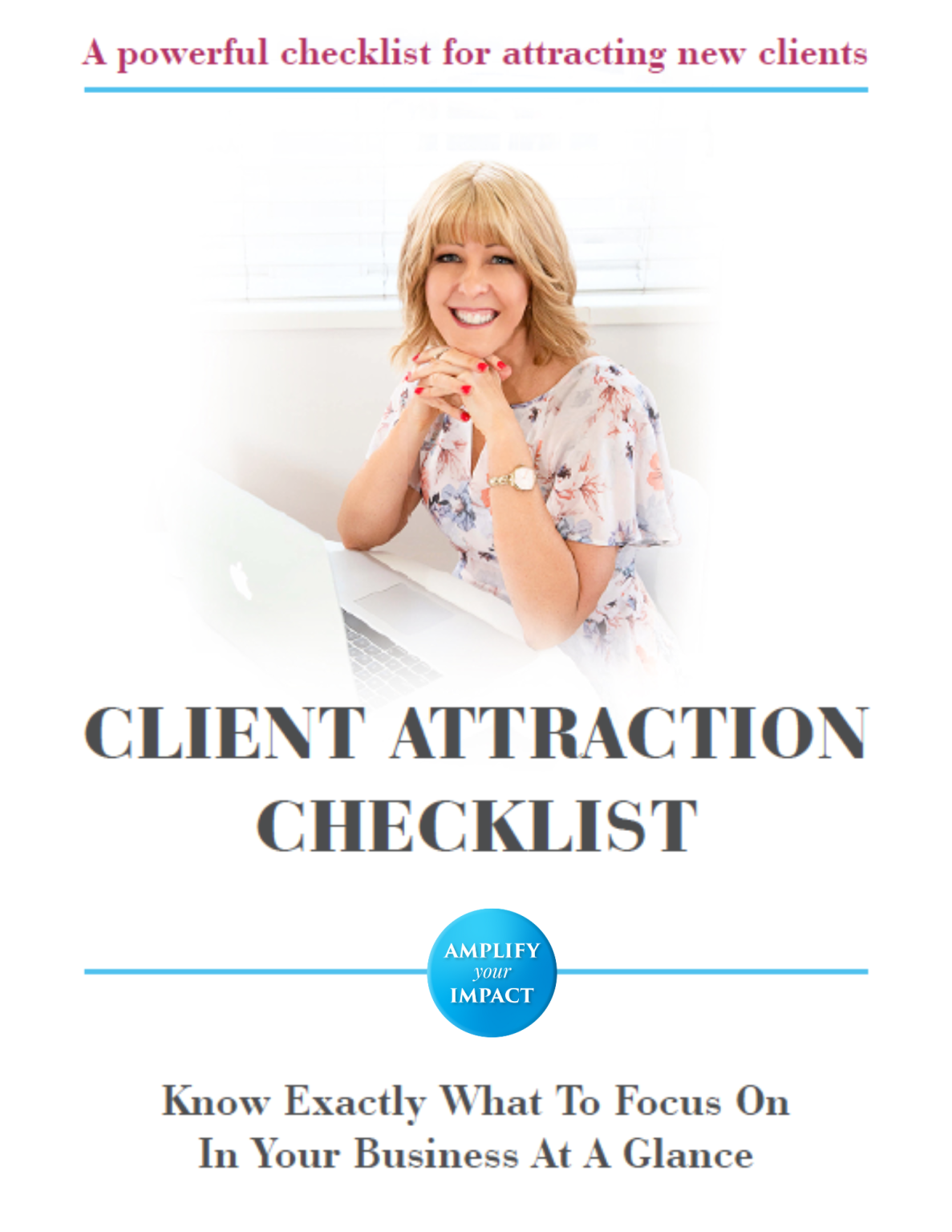Have you noticed how one person can appear super confident, while another person comes across as unconfident – even if both people are saying similar things?
Confidence is not just about what we say, but what our body is saying as we say it.
I think you’ll agree, if someone has really unconfident body language, you can tell straight away they don’t fully value or believe in themselves, or what they’re offering.
Our body language is a reflection of our confidence.
In this video and article, I share with you how to have the body language of confidence.
This is part 1 of a 3-part series about how to have the language of confidence.
Think about influence. If you’re a business owner, if you’re a coach or any kind of service provider, that person is buying in to your confidence, right?
People are not going to buy from you if you are not confident in yourself and what you’re offering.
Have you ever made a significant purchase, actually invested quite a lot of money in something where the salesperson or the service provider was really unconfident?
Probably not right?
Because we buy off people who have confidence and boldness in what they’re offering.
They believe in themselves, they know their worth and their value.
You have to be confident in three different ways.
The first way is your body language.
Body language is estimated to be roughly 55% of our communication.
It’s not just about what we say, but it’s how we say it. It’s about what our body is saying.
Our tonality, the way we say something is about 38% of our communication, and words are only about 7%.
A lot of trainers focus on the words – what to say, and our words are really important. I’m going to cover that in the third part of this series.
But in this article, I share tips on body language, because it can really make or break your ability to sign up clients your ability to make an offer confidently and make a sale.
Recently I was asked by a company to come in and train their staff on how to be more engaging and market themselves better.
We were brainstorming in this meeting yesterday and talking about all the different things that stop people from taking action, from being inspired to buy, and act.
And the first thing that we decided to start with is communication skills.
Because you can have the most amazing product or service in the world.
You can have all the written copywriting in place.
But if you are not inspiring, influential and confident in the way you deliver it, people are unlikely to buy it.

There are 3 main things that make up confident body language.
1. Open body language
When you first meet someone, they are making a first impression of you within about the first few seconds.
People are sizing you up and judging you. We have to, because it keeps us safe, right? We’ve got this in-built judging part of us to protect us, we want to know if that person is trustworthy, if that person is safe.
 Part of our brain is scanning the body language to make sure that that person can be trusted. The more closed we are, the less confident we look.
Part of our brain is scanning the body language to make sure that that person can be trusted. The more closed we are, the less confident we look.
So when you meet someone at a networking event, for example, if your body language is closed, people automatically, at an unconscious level discount you and lower you in your positioning inside their mind.
When you meet people – are you crossing your arms?
Are you putting your hands behind or body or clasping your hands in front of you?
At an unconscious level, this sends out signals to the person that you’re communicating with that you are not open to them.
And closed people aren’t usually warm, and are usually less trustworthy.
When I get people up in my workshops to stand in front of the group, pretty much everyone closes up, crosses their hands or arms or puts their arms behind their back -whatever it is that makes them feel less threatened.
Closed body language makes you appear more nervous and less confident.
So make sure that when you’re standing talking to someone that you keep your arms at your side, or use your hands purposefully.
It can be a really hard thing to do.
The most important thing you can practice with body language is standing with your arms directly at your side.
I remember as a personal trainer, I was taught when I’m training my client to stand with my arms at my side.
It was one of the hardest habits I had to get out of.
And when I did professional speaker training, they made us stand with our arms by our sides for days when we were presenting, to get us out of that habit of closing our body or fidgeting.
We often just go to this pattern unconsciously and don’t even realise we’re doing it. So you’ve got to train yourself. You need to practice it. It’s probably going to feel weird at first, but practice, practice, practice.
If you’re calm, and certain and confident, then you can easily just hold your hands at your sides.
When you’re in a meeting, when you’re speaking on video, when you’re chatting with a client, are you using open or closed body language?
It matters.
Also, remember to use your hands. Your hands add flavour, interest and colour to what you’re talking about.
Don’t overdo it; don’t be distracting. But just use your hands naturally as where they want to move to.
2. The body language of certainty
 People who are certain about what they’re saying use certain body language.
People who are certain about what they’re saying use certain body language.
Using gestures with your palms down shows certainty.
Using strong hand gestures where your hands are straight and in a natural position with your palms facing each other is also a certain position.
You can also use your hands to drive your point home.
With certain body language, you’ve got to read the situation.
Body language is not ‘one size fits all’, it’s about using what is appropriate for the person or people you’re with.
Standing tall with your head up is also a certain body language pose.
If you’re on stage and you want to come across confident, you want your body language to be bigger.
Certain language is bigger. Compare it to people who are very shy and nervous and awkward – their body language is small and more tucked in. They try and make themselves small to take up less room and not be so seen.
Very confident people try and take up more space.
It’s very similar to the animal kingdom, animals that are trying to exhibit their territory or their power or go really big.
Think of a peacock, or a gorilla beating its chest.
3. Symmetrical body language
 Another body language of confidence is symmetry.
Another body language of confidence is symmetry.
As soon as you tilt your head to the side, as soon you put your lips to one side, or lean on one hip or put your weight on one side, you look less confident.
Asymmetrical posture makes you look more confusion and less confident in what you’re saying.
When we’re certain we have symmetry: our feet are together, we stand with even weight on both feet, and we’re not tilting or leaning or torso or head at all.
If you want to come across more confident in your body language, this is a simple hack that you can apply straight away.
If you’re making an offer to someone, avoid going asymmetrical in your body language.
If you do it too much, you’ve lost it – it’s usually game over.
The body language of confidence is very symmetrical.
It doesn’t mean being stiff and forced. Just bring awareness to it and think about how you may be coming across and being perceived by people.
If you want to come across more confident, if you want to command more respect from people – and you can still do it in a nice, friendly, open, warm way – be symmetrical.
Symmetry is one of the most important parts of confident body language.
It doesn’t mean you’re symmetrical all the time, but when you’re delivering your message or presenting your offer, having enough symmetry in your body language is crucial.
So, to recap the 3 parts of confident body language
1. Open body language
2. Certain body language
3. Symmetrical body language
So, how’s your body language?
Are you being open, certain and symmetrical when you’re making your offers?
The first step is awareness.
I have hundreds more tips on influence and how to attract clients and inspire them to sign-up to what you’re offering.
If you’d like help in this area, I’d like to offer you a free, private 1-1 strategy session.
Together, we’ll create a game-plan on your best next steps to being a more influential business owner who gets results.
Click this link to book your free 45-minute strategy session.
Business is too hard to do alone.
So don’t struggle, make sure you reach out, I’d love to help you overcome your business challenges and get the results you deserve.
Kat

Leave a Reply